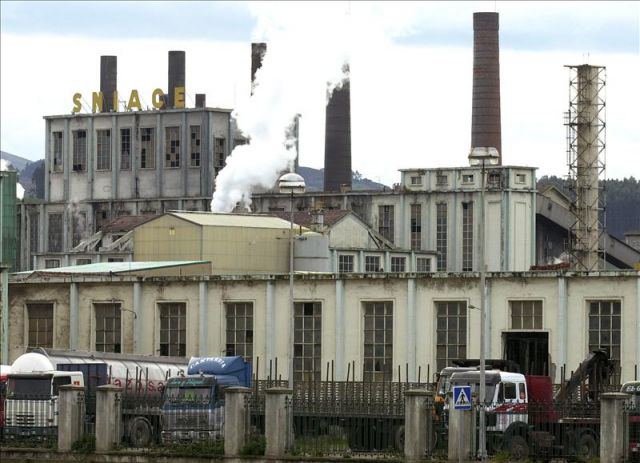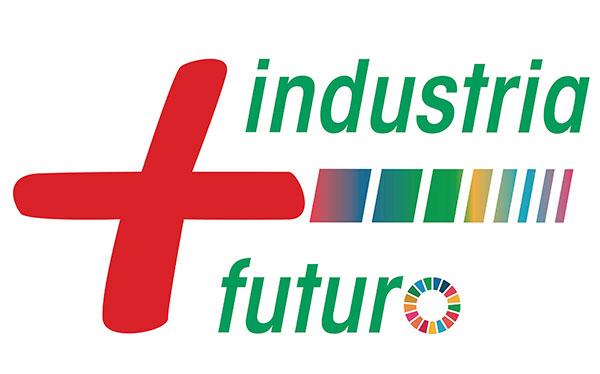

He has lost 1 in 4 jobs since 2008
If the industrial sector must play a key role in the recovery process of any economy, it seems that dark tunnel exit to the crisis in Cantabria will be delayed more than desired . This follows from the analysis that the USO Industry Federation (FI- USO) has made for the balance of this strategic sector during 2013 in the region of Cantabria.
.-Economic Indexes
Although some of the parameters analyzed by the union show slight improvements over the previous year, the overall trend is negative. The General New Orders Index in Industry is especially bad because it puts the region in line with the State -11.4 %, second only to the Basque Country with 11.7% , reaching a national average 7.8%. This parameter is a measure of the monthly change in demand.
With the same negative indicator that measures changes in demand in the industry called Turnover Index, which comprises the amounts invoiced by the company for the provision of services and sale of goods appears. Cantabria reduced this demand to -1 % in 2013 but in less proportion than the previous year which recorded a drop of -4.6 %. The Spanish companies unlike the Cantabrian began to trace improving billing with a national average stood at +0.2 %.
Regarding the Industrial Climate indicator , parameter analyzes the level of backlog, the trend of production and the level of stock of our companies, regaining their positions in 2013 but maintains a negative number of -14.8 versus -40 , 4 2012. The national average was at this time of -14.31
Moreover, the Industrial Price Index measures changes in the prices of the products manufactured by the Cantabrian industry and sold on the market in the first stage of commercialization, registered an increase of 2.1% compared to 0.4 % the previous year, a positive development to combat the dreaded deflation and one of the few parameters Cantabria improvement over the Spanish media that year recorded a rise of 0.6 % last year.
Industrial production, which accounts for the evolution of the productive activity of the industrial branches, mining , manufacturing and energy production and distribution , fell 0.7% during 2013 . The index registers marked a -4.8 % to -1.8 % versus Cantabria in Spain. This is another indicator that reflects the unique crises being experienced by the industry in this region losing positions in the national context in terms of the quantity and quality of production.
. – Industrial employment
The behavior in employment in this sector was very negative when compared to the rest of Spain. While in Cantabria is still destroying jobs in Spain has managed to reverse the trend and registered unemployment has fallen by -7.44 %. Note that unemployment increases but by less than the previous year was 18.5% . The Cantabrian industry ended the year with 5,633 jobseekers. The region of Torrelavega led the registered unemployment in this sector with 1,608 applicants.
According to the EPA, industry currently employs 36,228 workers in Cantabria, 3.5% less than the previous year. An increase of 1.9 % on permanent contracts and this type of contract 84.2% of total employment was recorded in the last year. As for the time of part type contracts in this sector accounted only 5.2 % – one point more than the previous year, compared to 22 % having the services sector. Seniority, who lost more jobs in the industrial sector Cantabrian are younger (less than 1 year ) with a -32.2 %. Since the beginning of the crisis (2008) and EPA, Cantabria has lost one in four jobs in the industrial sector. Use of this strategic sector has fallen to the same level as the region in 1994. The GDP per capita declined during the crisis Cantabria 6.15 % to reach 21.692 Euros
The number of Social Security in this sector fell by 1,565 in 2013, -5.1 %, of which only 41 were for the autonomous regime in maintaining high 2,331 workers. Township was Torrelavega who recorded a further decline in membership in the industrial sector with 601 casualties a -23.3 % annually.
The average workweek Cantabrian industrial sector is 35 hours compared to 30 in the service sector, the latter most affected by reductions in days due to the economic crisis. The average salary in the regional industrial sector was 29,323 Euros.
Regarding the size of the company, predominantly industrial establishments with fewer than 10 employees with 68 % followed by what they have between 10 and 49 employees with a weight of 23%. Midsize businesses between 50 and 249 workers amounted to 5.6 %, and employing more than 250 workers have little weight with 1.5 % of employment in the sector.
The labor unrest in Cantabria in the analyzed period was low with an average of 0.9 days / similar to the previous year was 0.8 day / month. On the other hand, increased by 8.44% intersectoral collective dossiers submitted. During the year 2013 the industrial companies that have filed bankruptcy were 20, 30% more than the previous year. In 2008 only 2 Industrial establishments were bankrupts in Cantabria.
. – Analysis.
It is recognized that the weight of industry in the Gross Domestic Product of a region is important in order to better withstand the effects of an economic crisis. The analyzed data show that although the free fall that had suffered in previous years, the industrial sector continues Cantabrian slope creeping attenuated. And it is beyond logic involvement of the financial crisis and consumption, common throughout the country, this production structure does not seem to react and start a recovery.
It is an unquestionable fact that Cantabria lose weight gradually, and especially in your industry. The reasons for this are many but mainly lie in the lack of endemic momentum and conformity, both political and social, worsened in the last decade in supporting the industry. Cantabria has been holding in a mature industry that annually lose more weight and is not intended to compensate by development plans in areas where Cantabria has recognized abilities to compete. The gradual decline of large industrial facilities in this region makes this area even more vulnerable to economic downturns.
The year 2013 makes it clear that only the economic recovery will not be enough for Cantabria again pushed the path of progress, as it has always been, by his industry.
The evil of Cantabria industry goes beyond the economic crisis and make a diagnosis is a priority sector by sector to try to find remedial alternatives at least serve to recover the lost tissue .
Report by the Federation of Industries of USO
Pedro Garcia Ayllon . Secretary General.
Madrid on February 24, 2014


